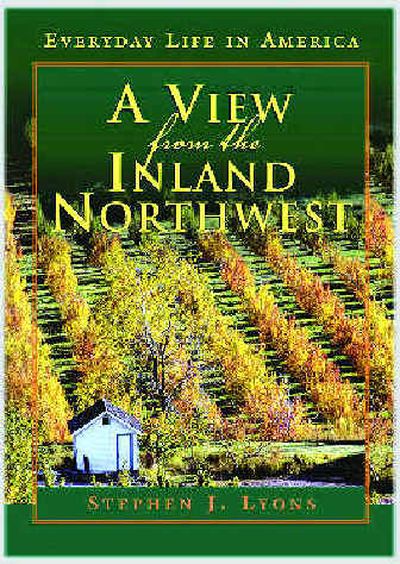Region’s people speak volumes

Stephen Lyons hitchhiked from Chicago to the West “at the wet-ear age of 17,” affecting a Neil Young look and Jack Kerouac’s wandering spirit, and fell in love with the rugged region the moment he saw the Rockies.
Nearly three decades later, family circumstances required Lyons to move from the West. But he leaves a considerable gift in his newest book, “A View from the Inland Northwest.”
This volume of finely tuned essays is notable for crisp, evocative prose and Lyons’ fascination with the undulating hills of the Palouse, the ragged remnants of the Clearwater forests, the fractured basalt of Channel Scablands, and the wildlife, wild fish and wild birds lost to the dam-building age.
But what most sets this work apart is the way Lyons reaches past myths, real-estate slogans and tourist brochures to tell the story of the region through its noteworthy, but unknown, people.
He finds them in 90-year-old Etta Wegner, avian artist and farmer’s widow. And Rei Osaki, the first Japanese-American to graduate from the University of Idaho law school in 1943 while her father, brother and thousands of other Japanese Americans were imprisoned in World War II internment camps.
Lyons searches for the elusive blue falcon with a broken logger named Dwight and takes a white-knuckle ride over the Rockies in a small turboprop airplane with turbulence so intense the pilot “looks like he is wrestling a rabid wolverine.”
He finds the pulse of small towns – as well as huckleberry pie and generous hamburgers – in their colorful cafes that are “community centers, meeting halls and counseling offices.” And Lyons brings humor to the page with a waitress in Harrison, Idaho, who flatly rejects his impatience when he asks what menu item can be fixed quickly.
“Nothing,” she says. “Would you like coffee while you wait?”
The longest essay centers on Ben Benthien, then chaplain for the Whitman County Sheriff’s Department. Lyons met Benthien at a Thanksgiving potluck and became intrigued by the selfless man who helped families at accident scenes, tried to stop domestic abuse, and provided trauma counseling for deputies and paramedics who live from one grim situation to the next. Lyons followed Benthien for a year and produced the moving story of a man who lives his faith in a quiet, powerful way.
Lyons (“Landscape of the Heart,” 1996) has written for The Washington Post, Newsweek, The Chicago Sun Times, Salon and USA Today. During his nearly three decades in the West, he lost the dewy-eyed romanticism that propelled his first visit. And, admirably, he got to know the West more intimately and more thoroughly than many of us who grew up here. This affords him occasional irreverence that is refreshing.
“Armed with our impending inheritances and preventative health care plans, our mission furniture and our modems, we drop from the skies like NATO paratroopers in search of authentic small-town life and bargain-basement mortgages,” Lyons writes of immigrants to the region.
“And, before you know it, we’re complaining about the development, the logging, the hunting, the farming, the lack of a good Internet connection, and the bad coffee and nondairy creamer served at the local cafe. … No wonder no one likes us.”
Simultaneously, Lyons notes that a million acres of Idaho’s wild lands have been lost to logging, mining, all-terrain vehicles and other development forces at a thundering pace in recent years. And there is never any question he loves the Inland Northwest and the West.
“Tomorrow seems far away, next year an eternity,” he writes on his last night in the region. “I try to imagine another place and another life, but I can’t get beyond this moment, this perfect spring night.
“I feel victorious, the grateful recipient of a precious gift. I’ve been given one more night outside in the West, under stars, next to swift-moving waters. This is all I ever asked of her.”